Are you tired of the same old printing technology? Ready for something new and innovative? Well, look no further than the properties of dye-based and pigment-based inks.
These two types of inks may seem similar at first glance, but they have distinct chemical compositions and properties that set them apart. Dye-based inks are like the vibrant hues of a rainbow, while pigment-based inks are like the bold strokes of a paintbrush.
Each has its own advantages and disadvantages, making it important to understand their differences when choosing the right ink for your printing needs. So, let’s dive in and explore the unique properties of dye-based and pigment-based inks and how they can revolutionize your printing experience.
Key Takeaways
- Dye-based inks produce vibrant colors and work best on glossy or semi-glossy paper types, while pigment-based inks are textured and work better on matte or fine art paper types.
- Dye-based inks offer a wider range of colors and consistency but are less resistant to fading or water damage and tend to bleed and smudge more easily. In contrast, pigment-based inks have higher durability and produce more accurate colors but may result in a grainy or speckled appearance and not blend well.
- Understanding the properties of both dye-based and pigment-based inks is important for choosing the right ink for your printing needs, considering paper compatibility and ink absorption.
- Dye-based inks are suitable for some printing needs but not the best for long-lasting prints. In contrast, pigment-based inks are ideal for professional-grade projects and archival printing, ensuring prints last for years and retain their vibrant colors.
Overview of Printing Technology Evolution

You might be surprised to learn how much printing technology has evolved over the years, from simple hand-carved woodblocks to the advanced digital printers we have today.
The early printing methods were incredibly time-consuming and labor-intensive, with each page requiring individual attention. However, with the advent of movable type and the industrial revolution, printing became faster and more efficient.
Printing technology not only revolutionized how we communicate and share information, but it also greatly impacted the environment. With the rise of mass production, paper consumption increased exponentially, leading to deforestation and other environmental issues.
However, advancements in printing technology have allowed us to reduce our paper consumption and limit our environmental impact. Digital printing, in particular, has made it possible to print only what we need, reducing waste and saving resources.
Furthermore, the cost-effectiveness of modern printing technology has made it possible for businesses of all sizes to produce high-quality printed materials without breaking the bank.
Chemical Composition of Dye-Based Inks
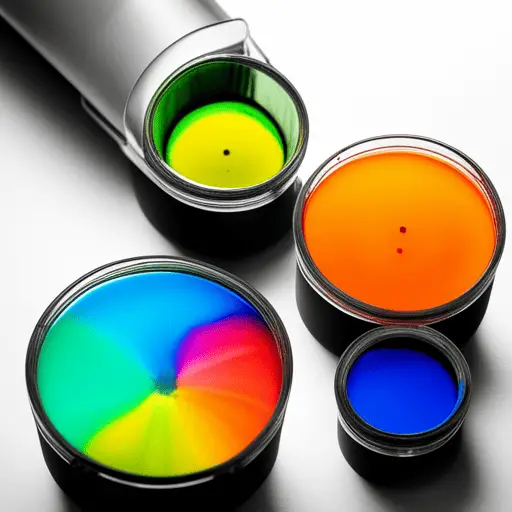
When you’re using dye-based inks, you’ll notice that they’re water-soluble and made from synthetic dyes. These inks produce vibrant colors ideal for printing on glossy or coated paper types.
It’s important to take note of these chemical compositions so you can choose the right ink for your printing needs.
Water-Solubility
If you’re looking for ink that won’t run at the slightest drop of water, pigment-based inks are like a sturdy ship that stays afloat, while dye-based inks are like a paper boat that quickly dissolves. Pigment-based inks are not water-soluble, which means they resist water and smudging. This makes them ideal for printing documents exposed to moisture or handling, such as flyers or brochures.
On the other hand, dye-based inks are water-soluble and easily dissolve in water. This makes them less water-resistant than pigment-based inks. Using pigment-based inks is best if your printed document may come into contact with water. However, dye-based inks are often used in inkjet printers, producing vibrant and vivid colors perfect for printing photographs and other creative projects.
| Properties | Dye-Based Inks | Pigment-Based Inks |
|---|---|---|
| Water Solubility | Soluble | Not Soluble |
| Durability | Low | High |
| Color Range | Wide Range | Limited |
| Printing Speed | Faster | Slower |
| Cost | Low | High |
As you can see from the table above, dye-based inks have a wide range of colors and are often cheaper than pigment-based inks. However, pigment-based inks have higher durability and produce more accurate colors. Depending on what you’re printing, one type of ink may be more suitable. It’s important to consider the properties of dye- and pigment-based inks before deciding.
Synthetic Dyes
Synthetic dyes are popular for creating vibrant and bold colors in fabric dyeing and other industries. They are made from chemical compounds and offer various colors that aren’t always possible with natural dyes. Synthetic dyes are also more consistent in their colors, allowing for precise color matching and reproduction.
However, synthetic dyes have come under scrutiny due to their potential environmental impact. Some synthetic dyes aren’t biodegradable and can threaten ecosystems and human health. As a result, there’s been a growing interest in using natural dyes in fabric dyeing and other industries as a more sustainable alternative.
Natural dyes are made from plant, animal, or mineral sources and offer a more eco-friendly option for coloration. While they may not offer the same range of colors as synthetic dyes, they can still produce beautiful and unique hues.
Vibrant Colors
You can still achieve bold, vibrant colors with natural dyes to make your designs stand out. While synthetic dyes may offer more color intensity and accuracy, natural dyes have their own unique charm. Here are some reasons why you should consider using natural dyes for your next project:
- Natural dyes have a certain depth and richness that synthetic dyes can’t replicate.
- They’re eco-friendly and sustainable, making them a great choice for those who want to reduce their environmental impact.
- Using natural dyes can be a fun and rewarding experience, as you can experiment with different materials and techniques to create unique colors.
- Natural dyes are often used in traditional crafts and techniques, adding a cultural and historical aspect to your work.
- Natural dyes can produce unexpected and beautiful results, as each batch can vary slightly depending on factors such as the season and soil quality.
While natural dyes may not offer the same level of color accuracy and intensity as synthetic dyes, they’re a great option for those who want to explore more sustainable and traditional dyeing methods. Natural dyes can add a special touch to any project with their unique charm and unexpected results.
Suitable Paper Types
Now that you know how vibrant dye-based and pigment-based inks can be, let’s discuss the importance of paper compatibility and ink absorption.
Not all paper types are created equal, and using the wrong one can result in disappointing print quality.
When it comes to dye-based inks, they work best on glossy or semi-glossy paper types. These papers have a coating that allows the ink to sit on top of the paper, resulting in brighter and more vibrant colors.
On the other hand, pigment-based inks work better on matte or fine art paper types. These papers have a porous surface that allows the ink to penetrate and bond with the paper fibers, resulting in a longer-lasting and more fade-resistant print.
So, before deciding on a paper type, consider the type of ink you will use to achieve the best results.
Chemical Composition of Pigment-Based Inks
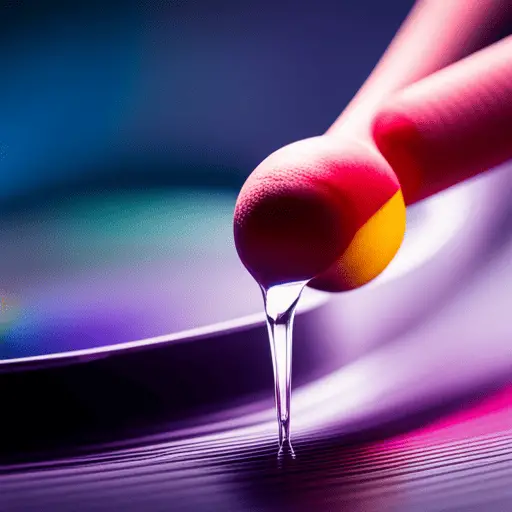
You can see the depth and richness of pigment-based inks when you examine the particles suspended in the liquid. Unlike dye-based inks, pigment-based inks are composed of tiny particles on top of the paper, giving it a textured appearance that can almost be felt on the page. This is because pigment-based inks are made up of small solid particles mixed with a liquid carrier.
This chemical composition gives pigment-based inks unique properties that make them ideal for various applications. Here are three things you should know about pigment-based inks:
- Pigment-based inks are more durable than dye-based inks. This is because the solid particles in pigment-based inks are more resistant to fading, water, and other environmental factors that can damage the ink over time.
- Pigment-based inks have excellent lightfastness. This means they resist fading when exposed to light for extended periods. This is particularly important for artists and photographers who need their work to remain vibrant and true to color over time.
- Pigment-based inks offer a wider color gamut than dye-based inks. This means they can produce a greater range of colors and shades, making them ideal for applications where color accuracy is important, such as printing photographs or fine art prints.
Advantages of Dye-Based Inks
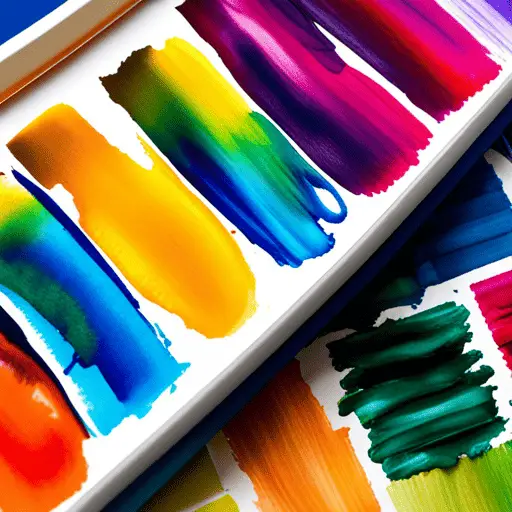
If you’re looking for ink that produces vibrant and eye-catching colors, dye-based ink is the best choice for you. This type of ink comprises a solution of dye molecules and liquid, which allows it to quickly and easily penetrate the paper fibers.
This results in a bright, vivid color that will make your prints stand out. Another advantage of dye-based ink is its quick drying time. Unlike pigment-based ink, which can take longer to dry due to its thicker consistency, dye-based ink dries almost instantly.
This makes it ideal for printing documents that need to be handled immediately or for printing photos you want to display without worrying about smudging or smearing. However, one thing to remember is that dye-based ink may not be as durable as pigment-based ink, which means that the colors may fade if not properly stored and cared for.
Advantages of Pigment-Based Inks
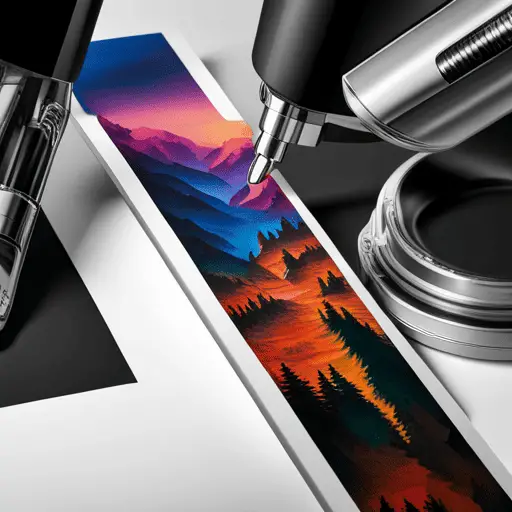
Discover the superior quality and longevity of pigment-based inks, which elevate your prints to a professional level and ensure they last for years.
Unlike their dye-based counterparts, pigment-based inks are made of tiny particles on paper, creating a more vibrant and long-lasting image.
Here are some of the durability benefits and fade resistance advantages of using pigment-based inks:
- Pigment-based inks are more resistant to water, smudging, and fading than dye-based inks.
- They produce a wider color gamut, allowing you to achieve more accurate and vivid colors.
- Pigment-based inks can be used on various media types, including glossy and matte papers, canvas, and fabric.
- They’re ideal for archival printing, ensuring your prints will last decades without deterioration.
Using pigment-based inks, you can create prints that stand the test of time and retain their vibrant colors for years.
Whether you’re a professional photographer or just someone who wants to create high-quality prints, pigment-based inks are the way to go.
So why settle for less when you can have the best?
Disadvantages of Dye-Based Inks

Sadly, using dye-based inks won’t result in prints that last as long or maintain their color vibrancy as well as you might hope. Dye-based inks are made from synthetic dyes that dissolve in water and are absorbed into the paper.
This means the ink is less resistant to fading or water damage than pigment-based inks. The colors in print made with dye-based inks may fade or change over time, especially if exposed to direct sunlight or moisture.
Additionally, dye-based inks have some limitations and drawbacks. They tend to bleed and smudge more easily, which makes them less suitable for printing on glossy or coated paper. They also tend to be more expensive than pigment-based inks, which can concern those who print large quantities.
While dye-based inks may be suitable for some printing needs, they’re not the best choice for those who want their prints to last a long time and maintain their color vibrancy.
Disadvantages of Pigment-Based Inks
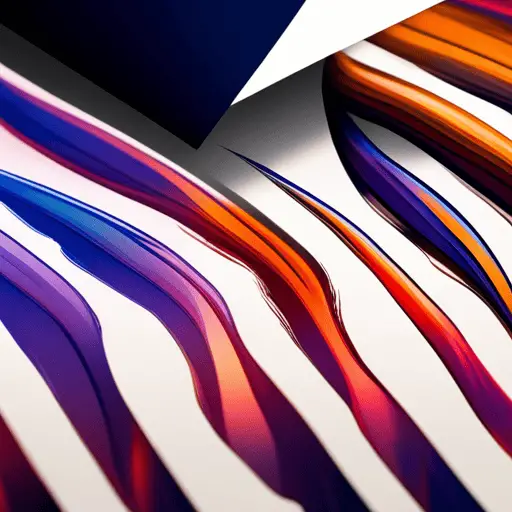
You may find that the prints made with pigment-based inks have a more muted or dull appearance, lacking the bright and vibrant colors of dye-based inks. This is because pigment-based inks comprise tiny particles that sit on top of the paper rather than being absorbed into it like dye-based inks.
This can lead to quality concerns, as the ink may not blend well and can result in a grainy or speckled appearance. Another disadvantage of pigment-based inks is their longevity issues. While they’re generally more resistant to fading and water damage than dye-based inks, they can still be affected by exposure to light and air over time.
This can cause the colors to shift or fade, leading to a loss of vibrancy and detail in the print. It’s important to consider your prints’ intended use and lifespan when choosing between dye-based and pigment-based inks, as well as each ink type’s specific qualities and characteristics.
Conclusion
So now that you know about the different properties of dye- and pigment-based inks, you can decide which type of ink to use for your printing needs.
Remember that dye-based inks produce vibrant and vivid colors, while pigment-based inks are ideal for producing long-lasting and durable prints.
One interesting statistic to note is that according to a study conducted by Wilhelm Imaging Research, pigment-based inks can last up to 200 years before fading, while dye-based inks only last about 25 years. This emphasizes the importance of considering the longevity of your prints when choosing between dye-based and pigment-based inks.
So take your time to evaluate your needs and choose the ink type that best suits your printing requirements.

